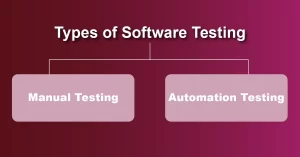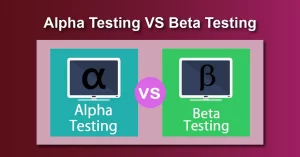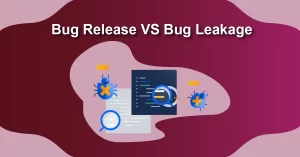Introduction to Manual Testing Interview Questions
In today’s competitive environment, testing is essential to the achievement of any software product. Manual Tests are important in software development because they may be used in situations where Automated Testing isn’t possible. As a result, there is now a high demand for persons with manual testing abilities. This article about Manual Testing Interview Questions will help you master software testing.
Manual testing is a type of software testing in which the testing phase is run manually rather than using an automated tool. All test cases are manually executed by the tester from the perspective of the end-user. It determines whether or not the application meets the requirements specified in the requirement document.
In this article on Manual Testing Interview Questions. I’ll go over the most common and top Manual Testing Interview Questions and Answers.
Beginners Level Manual Testing Interview Questions

In this section, I’ll be covering the fundamental and basic Manual Testing interview questions asked by the candidates. These manual testing interview questions will help you ace the interview. Let’s get started.
Describe what software testing entails.
One of the basic Manual Testing Interview Questions. It is the process of examining software to see if it fits the demands of stockholders, as well as discovering faults and determining the item’s overall quality by conducting an evaluation, of functionalities, quality, utility, and correctness. In the end, it’s all about quality assurance.
What is the difference between quality control and quality assurance?
|
Quality Control |
Quality Assurance |
|
Quality control is regrading software features and a way of running a program to see if it has any flaws and to ensure that the software satisfies all of the stakeholders’ criteria. |
Quality assurance is a procedure approach that ensures that the methodologies, techniques, and procedures utilized to produce high-quality deliverables are appropriately implemented. |
Why is Software Testing important?
One of the basic Manual Testing Interview Questions. Software testing is a required procedure that ensures that system software is safe and suitable for distribution to the public. Here are some persuasive arguments in favor of testing:-
- It highlights the flaws and faults that occurred during the development process.
- Reduces coding cycles by discovering issues early in the development process.
- Ensures that the software program is less expensive to maintain and produces more accurate, consistent, and reliable outcomes.
- Testing guarantees that the client trusts the company and that their pleasure with the app is maintained.
- Ensures that the software is bug-free and that the product’s quality satisfies industry standards.
- Ensures that the program is not prone to errors.
What are the two most important Types of Software Testing?

Although software testing is a vast field, it may be divided into two categories:-
- Manual Testing is the most traditional method of software testing, in which testers manually run test cases without the use of any test automation technologies. It means that QA testers manually test the software program.
- Automation Testing is the practice of performing test cases with the use of methods, programs, and software by repeating pre-defined operations. Test Automation aims to replace manual human work with more efficient technology or equipment.
What are the many methods of manual testing?
One of the basic Manual Testing Interview Questions. There are several forms of manual testing:-
- Black Box Testing
- White Box Testing
- Unit Testing
- System Testing
- Integration Testing
- Acceptance Testing
What are the various manual testing levels?
There are four levels of manual testing and this is an important Manual Testing Interview Questions for beginners:-
- Unit testing is a method of conceptually isolating the smallest bit of code, referred to as a unit, in a system. It is primarily concerned with the independent module’s functional soundness.
- Integration testing is a type of software testing in which different modules are merged and examined to see if they function together as they should. The primary goal of this exercise is to evaluate the interaction between the components.
- System Testing — In system testing, all of the software’s components are inspected as a whole to guarantee that the final result fits the required criteria. User testing, regression testing, and functionality testing are just a few examples of system testing.
- Acceptance testing, often known as UAT (user acceptance testing), is the final stage that assesses whether the product is ready to be published.
In manual testing, what is a testbed?
One of the basic Manual Testing Interview Questions. The testbed is an environment that has been set up for testing. It is a testing environment that includes the hardware and any software required to run the program being tested. It is made up of equipment, software, network setup, a test application, and other applications.
What is the manual testing procedure?
The steps in the manual testing procedure are as follows:-
|
Planning and Control |
Analysis and Design |
Implementation and Execution |
Exit criteria evaluation and reporting |
test closure activities |
What’s the distinction between alpha and beta testing?

One of the basic Manual Testing Interview Questions. The differentiation between
|
Alpha Testing |
Beta Testing |
|||
|
Alpha testing is a sort of software testing that is used to find issues before a product is released to real users or the general public. User acceptability testing, often known as alpha testing, is a sort of user testing. |
Beta testing is done in a real setting by real users of the software product. User acceptability testing is also known as beta testing. |
|
Verification |
Validation |
|
It is a method of static analysis. The test is carried out without running the code in this case. Reviews, inspections, and walkthroughs are some examples. |
It’s a type of dynamic analysis in which the code is executed to test it. Techniques such as functional and non-functional testing are examples. |
What is the distinction between bugs and defects?
A bug is a legitimate flaw in software that is discovered during testing. A Defect is a discrepancy between intended and actual outcomes that the developer discovers after the product has gone live. It is one of the intermediate Manual Testing interview questions.
What are some of the Benefits of Manual Testing?

It is one of the intermediate Manual Testing interview questions but also an important one. Manual testing has the following advantages:-
- When compared to automated testing, it is a less expensive method of testing.
- Manual testing is the only way to analyze a product from the perspective of the end-user.
- Because visual accessibility and preferences are difficult to automate, GUI testing may be done more precisely with the aid of manual testing.
- For new persons who have just started testing, it is simple to learn.
- It’s ideal for short-term projects when test scripts won’t be replicated and reused tens of thousands of times.
- When the project is in the early phases of development, this is the best option.
- Because automated tests might contain flaws and missing problems, they are quite dependable.
What significance does documentation play in manual testing?
The importance of documentation in accomplishing good software testing cannot be overstated. Specification, blueprints, business requirements, test reports, settings, program modifications, testing process, test cases, software bug reports, and user guide, among other things, should all be recorded.
Documenting test cases can help you estimate the amount of testing time you’ll need, or the test scripts and tracking and tracing requirements. The following are some examples of regularly used documentation objects in software testing this is an important Manual Testing Interview Questions :-
- Test Plan
- Test Scenario
- Test Case
- Traceability Matrix
What is automated testing and how does it work?
Automation testing is a sort of software testing that involves utilizing an automation tool to execute automated test cases. It speeds up test execution by allowing test scripts to be created once and executed several times without the need for human interaction. It is one of the intermediate Manual Testing interview questions.
What are some of the Benefits of Automated Testing?

The following are some of the benefits of automated testing:-
- Automated test execution is quick and saves a significant amount of time.
- Human mistake is eliminated during testing when test scripts are well prepared.
- CI tools like Jenkins, which may also be set to distribute daily test results to key stakeholders, can be used to schedule test execution for a nightly run.
- Automation testing uses a lot fewer resources. Test execution needs nearly no time from QAs once the tests have been automated. QA bandwidth can be used for other exploratory work.
What are some of the drawbacks to automated testing?
You can answer these types of intermediate Manual Testing interview questions by expressing the challenges you faced during automation testing. The following are some of the drawbacks of automated testing:-
- Writing test scripts necessitates the expertise of automation testing professionals.
- Additional work to create scripts is necessary beforehand.
- Automation scripts are only used to verify the tests that have been developed. These tests may overlook certain errors that are quite obvious and easy to see by humans (manual QA).
- Even modest changes in the program necessitate script updates and maintenance.
What are some characteristics of defect reporting?
The following are some of the characteristics of a Defect report:-
- Defect Id – The defect’s unique identification.
- Defect Summary — A one-line description of the flaw, similar to a defect title.
- A full explanation of the defect is provided in the defect description.
- Steps to Duplicate – These are the steps that must be followed in order to reproduce the fault.
- Expected Result – The expected behavior that the application deviates from as a result of the issue.
- A
ctual Result- The application presents erroneous status in relation to the flaw. - Fault Severity — This field can be adjusted to minor, medium, major, or show stopper depending on the severity of the defect.
- Priority – This field can be adjusted on a range of P0 to P3 depending on the severity of the fault.
Advanced Level Manual Testing Interview Questions

I’ll be covering advanced level manual testing interview questions in this section. These Manual Testing Interview Questions mainly focus on the command and practical aspects of Manual Testing so the interviewer can get an idea of how much experience candidates carry with them.
What characterizes a critical flaw?
A critical bug is one that has the potential to disrupt the bulk of an application’s functioning. It indicates that a significant portion of functionality or a critical system component is utterly broken, with no way to proceed. The application cannot be delivered to end-users until the critical problem has been fixed.
What exactly is the pesticide paradox? What is the best way to deal with it?
According to the pesticide paradox, if the same tests are done repeatedly, the same test cases will ultimately stop finding new bugs. Developers will be especially cautious in regions where testers discovered more flaws, and they may overlook other areas. Methods for avoiding the pesticide paradox include:-
- To create completely new test cases to put various aspects of the software to the test.
- To create new test cases and incorporate them into existing test cases.
- It is feasible to detect more flaws in areas where defect levels have decreased using these approaches.
When it comes to testing, what does the phrase ‘quality’ imply?
Quality software is generally free of bugs, delivered on time and on budget, fulfills specifications and/or objectives, and is maintainable. But, then again, the term “quality” is a subjective one. It depends on who the ‘client’ is and how influential they are in the greater scheme of things. Each sort of ‘client,’ for example, will have its own definition of ‘quality’ — the accounting department may describe quality in terms of revenues, while an end-user may characterize quality simply as user-friendly and bug-free.
Is it possible that system testing may be done at any point in the development process?
All of the software’s components are analyzed as a whole during system testing to guarantee that the final result fulfills the defined criteria. No, that is not the case. Only until all modules are all in place and working correctly may system testing begin. Before the UAT, the system is usually tested (User Acceptance Testing).
What makes boundary value analysis such an excellent test case generator?
This is an advanced level of Manual Testing Interview Questions. You can answer this question this way:
The fact that a higher number of mistakes occur at the borders rather than in the middle of the input domain for a test is one of the reasons why boundary value analysis produces effective test cases. Test cases for the boundary value analysis approach are designed to incorporate values at the edges. It’s called ‘Positive testing’ if the input is inside the boundary value. Negative testing happens when the input value is outside the boundary value. Maximum, minimum, inside or outside edge, normal values, or error values are all included.
What is the distinction between bug release and bug leakage?

Ans. When tested software is pushed into the marketplace and the end-user discovers defects, this is known as bug leakage. These are issues that the testing team overlooked throughout the testing phase.
A bug release, on the other hand, is when a certain version of the software is published in the marketplace with some known problems that will be repaired in later releases. These are low-priority issues that are highlighted inside the release notes when shared with end-users.
Is there a distinction between testing and debugging?
Ans. Testing is usually carried out by the test team in identifying system flaws. Debugging, on the other hand, is a development team activity. The source of the fault is identified and corrected during debugging. As a result, the problem has been removed, as well as any future occurrences of the fault.
Another distinction is that testing may be performed without any prior understanding of program architecture. Debugging, on the other hand, necessitates an understanding of program architecture and code.
Is there a distinction between testing and debugging?
Ans. Testing is usually carried out by the test team in identifying system flaws. Debugging, on the other hand, is a development team activity. The source of the fault is identified and corrected during debugging. As a result, the problem has been removed, as well as any future occurrences of the fault.
Another distinction is that testing may be performed without any prior understanding of program architecture. Debugging, on the other hand, necessitates an understanding of program architecture and code.
In software testing, what is the PDCA cycle?

In software development, the PDCA cycle is critical for continual process improvement. It entails the following four steps:-
|
PLAN |
DO |
CHECK |
ACT |
|
Plan the objectives, targets, and activities that will assist you to meet your customer’s expectations. |
It is responsible for putting the strategy into effect. It is vital to have a proper strategy to execute in order to provide greater quality and satisfaction to the consumer. |
To see how far your strategy has progressed since it was introduced. The outcome will reveal how precise the strategy was. |
Acting on the results to make further improvements that aid in the achievement of the targeted objectives. |
Frequently Asked Question’s
1. How do you prepare for manual testing?
Here’s a step-by-step guide to manual testing:-
- Examine the software specification paper for requirements.
- Make a detailed test plan.
- Create test scenarios that cover all of the document’s requirements.
- Get the QA lead to look through your test cases.
- Carry out test scenarios and look for problems.
For more information read our blog on Manual Testing Interview Questions.
2. What is V model in testing with diagram?
The V-model is an SDLC paradigm in which processes are executed sequentially in a V-shape. The Verification and Validation model is another name for it. The V-Model is built on the association of a testing phase for each relevant development step, and it is an extension of the waterfall model. For more information read our blog on Manual Testing Interview Questions.
3. What is STLC in manual testing?
The Software Testing Life Cycle (STLC) is a series of steps taken during the testing process to guarantee that software quality objectives are satisfied. Both validation and verification are part of the STLC. The testing phase is not a separate activity, contrary to common opinion. For more information read our blog on Manual Testing Interview Questions.
4. What is difference between verification and validation?
Testing is a way of ensuring that the specification accurately reflects the needs of the client, whereas verification is the method of verifying that the program satisfies the requirements. All actions connected with generating high-quality software are included in verification. For more information read our blog on Manual Testing Interview Questions.
5. Which tool is used for manual testing?
Here is the list of top 5 manual testing tools:-
|
FogBuz |
Selenium |
QTP |
Bugzilla |
TestLink |
6. What is use of API testing?
API testing is a sort of testing process that examines an application program interface (API) to ensure that it meets its functional, security, performance, and reliability requirements. The tests are run either on the API itself or as part of the testing phase. For more information read our blog on Manual Testing Interview Questions.
Manual testing is a difficult process. To find issues and figure out how to fix them, you’ll need the right expertise and, more importantly, patience. Manual testing for beginners is a reference that provides testing basics and advice for beginners. For more information read our blog on Manual Testing Interview Questions.
Visual testing often referred to as visual UI testing, is the solution to such issues. It ensures that all users can see the software’s user interface (UI). Visual checks ensure that each item on a website page is in the right form, size, and location. For more information read our blog on Manual Testing Interview Questions.
Selenium is an open-source automation tool. It provides a single interface for writing test scripts in a variety of programming languages, including C++, Java, NodeJS, PHP, Perl, and Python. Today’s development processes may be completed in as little as 2 to 3 weeks.
In order to ship fresh, bug-free versions in that time frame, predictable, repeatable testing with near-instant feedback is required. That is why Selenium tests are so important in today’s development. For more information read our blog on Manual Testing Interview Questions.
Smoke Testing is a software testing procedure that assesses whether a software package has been delivered and is stable. Smoke testing allows the QA team to continue with the rest of the software testing. It is made up of a small number of tests that are run on every build to verify software functionality. “Build Verification Testing” or “Confidence Testing” are other terms for smoke testing. For more information read our blog on Manual Testing Interview Questions.
Tagged in :
Latest articles
More Articles & Posts
UNLOCK THE PATH TO SUCCESS
We will help you achieve your goal. Just fill in your details, and we'll reach out to provide guidance and support.














